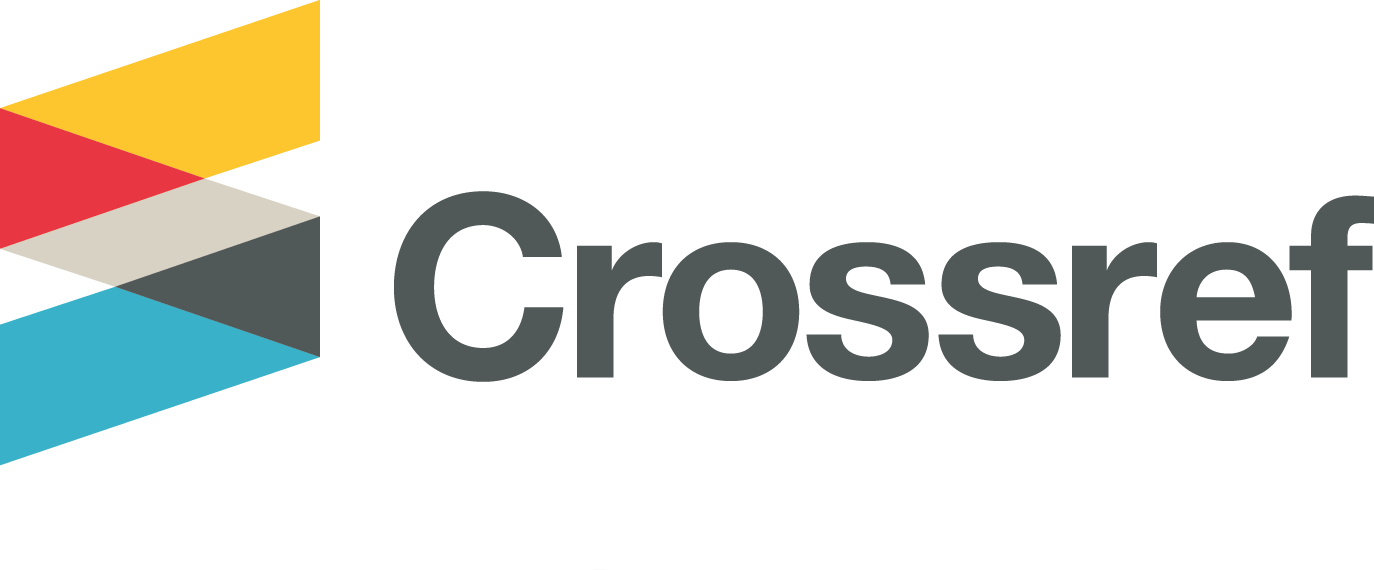Social Media Dependency and the Dynamics of Social Interaction Among Adolescents: Analysis Based on William Glasser's Theory Using Storyboards
Abstract
The advancement of information technology has led adolescents to engage intensively with social media, influencing the quality of their social interactions. This study aims to analyze the relationship between social media dependency and adolescents’ social interaction dynamics through William Glasser’s Choice Theory framework. A qualitative case study approach was employed, involving two vocational high school students selected through purposive sampling. Data were collected using in-depth interviews, participant observation, and storyboard techniques. The findings reveal that excessive social media use disrupts daily routines, fosters emotional dependency, and demonstrates the ambivalent role of social media as both a trigger for addiction and a source of self-motivation. Conversely, involvement in real-life activities, such as entrepreneurship, served as an adaptive mechanism to mitigate digital dependency. The analysis, based on Choice Theory, highlights that adolescents’ psychological needs fulfilled through social media remain superficial, underscoring the importance of balancing online and offline activities to support healthier social and emotional development.
Kemajuan teknologi informasi telah mendorong remaja semakin intensif menggunakan media sosial, yang berdampak pada kualitas interaksi sosial mereka. Penelitian ini bertujuan menganalisis keterkaitan antara ketergantungan media sosial dengan dinamika interaksi sosial remaja melalui kerangka teori William Glasser. Metode penelitian menggunakan pendekatan kualitatif dengan desain studi kasus, melibatkan dua siswi SMK yang dipilih secara purposive. Data diperoleh melalui wawancara mendalam, observasi partisipan, serta teknik storyboard. Hasil penelitian menunjukkan bahwa penggunaan media sosial berlebihan dapat menimbulkan disrupsi pola hidup, ketergantungan emosional, serta ambivalensi fungsi media sosial sebagai pemicu kecanduan sekaligus motivasi perubahan diri. Temuan lain memperlihatkan bahwa keterlibatan dalam aktivitas nyata, seperti berjualan, mampu menjadi mekanisme adaptif untuk mengurangi ketergantungan pada media sosial. Analisis berdasarkan Choice Theory menegaskan bahwa pemenuhan kebutuhan psikologis remaja melalui media sosial cenderung bersifat semu, sehingga keseimbangan antara aktivitas daring dan luring menjadi krusial bagi perkembangan sosial dan emosional mereka.
Keywords
Full Text:
FULL TEXTReferences
Afrelia, N. D., & Khairat, M. (2022). Hubungan antara intensitas pengguna tiktok dengan kontrol diri pada remaja. JURNAL SPIRITS, 12(2), 62–67. https://doi.org/10.30738/spirits.v12i2.12808
Ayob, S., & Omidire, M. F. (2021). Storyboards as a Qualitative Method of Exploring Learners’ Experience With the Use of a Multilingual Support Strategy. International Journal of Qualitative Methods, 20. https://doi.org/10.1177/16094069211034391
Birtwell, K., Morris, R., & Armitage, C. J. (2022). Combining timelining and storyboarding to create a novel method for INtervention DesIGn with stakehOlders: INDIGO. International Journal of Qualitative Methods, 21. https://doi.org/10.1177/16094069221127147
Bulan, M. A. I. C., & Wulandari, P. Y. (2021). Pengaruh Kontrol Diri Terhadap Kecenderungan Perilaku Cyberbullying Pada Remaja Pengguna Media Sosial Anonim. Buletin Riset Psikologi Dan Kesehatan Mental (BRPKM), 1(1), 497–507. https://doi.org/10.20473/brpkm.v1i1.25127
Creswell, J. W., & Poth, C. N. (2017). Qualitative Inquiry and Research Design: Choosing Among Five Approaches. SAGE Publications. https://books.google.co.id/books?id=gX1ZDwAAQBAJ
Fassi, L., Ferguson, A. M., Przybylski, A. K., Ford, T. J., & Orben, A. (2025). Social media use in adolescents with and without mental health conditions. Nature Human Behaviour, 9(6), 1283–1299. https://doi.org/10.1038/s41562-025-02134-4
Fauziyah, N., Silvin, S., & Ulfa, N. M. (2025). Dampak Media Sosial Terhadap Psychological Wellbeing Remaja. PANDALUNGAN : Jurnal Penelitian Pendidikan, Bimbingan, Konseling Dan Multikultural, 3(1), 89–100. https://doi.org/10.31537/pandalungan.v3i1.2232
Gladding, S. T. (2016). The Creative Arts in Counseling. Wiley. https://books.google.co.id/books?id=XyDSCwAAQBAJ
Hajriah, H., Suryani, A., Sari, L., & Rahmah, D. D. N. (2021). Gambaran Strategi Coping Mahasiswa Pengguna Aplikasi Tik Tok yang Menjalani Social Distancing Wabah Covid-19. Psikoborneo: Jurnal Ilmiah Psikologi, 9(3), 685. https://doi.org/10.30872/psikoborneo.v9i3.6509
Harod, Y. M., & Goretti Adiyanti, M. (2025). Behind the Scenes of Instagram: The Relationship Between Self-Esteem and Narcissistic Tendencies Among Gen Z. Psikoborneo: Jurnal Ilmiah Psikologi, 13(3), 572. https://doi.org/10.30872/psikoborneo.v13i3.19901
Iswanto, H. F., Anggraeni, R., Kartikasari, R., Bahij, A. T. B., & Kadarwati, S. (2021). Pelatihan Bijak Bermedia Sosial sebagai Upaya Pendidikan Karakter pada Remaja. Jurnal Abdimas, 25(2), 197–206. https://doi.org/10.15294/abdimas.v25i2.32993
Kalimuthu, A., & Kalaiselvan, S. (2025). The Art Of Storyboarding: A Research Perspective. International Journal of Creative Research Thoughts, 13(5), 2320–2882. www.ijcrt.org
Khostarina, T., Nasution, N. A. R., & Safitri, C. R. (2025). The Impact of Social Media Use and Peer Pressure on Adolescent Cybercrime Behavior : The Mediation Role of Emotional Intelligence and Parental Supervision Moderation. Psikoborneo: Jurnal Ilmiah Psikologi, 13(4), 747–760. https://doi.org/http://dx.doi.org/10.30872/psikoborneo.v13i4.22549
Ma’ruf, F., Pattiasina, P. J., Setiawati, R., Camerling, B. C. F., & Tuasela, P. E. (2024). The Influence of Social Media Usage, Internet Access, and Mobile Device Penetration on Social Interaction Quality among Adolescents in Indonesia. The Eastasouth Journal of Social Science and Humanities, 1(03). https://doi.org/10.58812/esssh.v1i03.275
Miles, M. B., Huberman, A. M., & Saldana, J. (2018). Qualitative Data Analysis: A Methods Sourcebook. SAGE Publications. https://books.google.co.id/books?id=lCh_DwAAQBAJ
Mufti Prasetiyo, S., Gustiawan, R., Farhat, & Rizzel Albani, F. (2024). Analisis Pertumbuhan Pengguna Internet Di Indonesia. Buletin Ilmiah Ilmu Komputer Dan Multimedia (BIIKMA), 2 (1 SE), 65–71.
https://jurnalmahasiswa.com/index.php/biikma/article/view/1032
Nasrullah, R. (2015). Media Sosial: Perspektif Komunikasi, Budaya, dan Sosioteknologi. Simbiosa Rekatama Media.
Noya, J., & Lameky, V. Y. (2025). The Impact of Social Media Addiction on Adolescent Mental Health in Ambon City, Indonesia. Biology, Medicine, & Natural Product Chemistry, 14(1), 259–266. https://doi.org/10.14421/biomedich.2025.141.259-266
Odgers, C. L., & Jensen, M. R. (2020). Annual Research Review: Adolescent mental health in the digital age: facts, fears, and future directions. Journal of Child Psychology and Psychiatry, 61(3), 336–348. https://doi.org/10.1111/jcpp.13190
Popat, A., & Tarrant, C. (2023). Exploring adolescents’ perspectives on social media and mental health and well-being – A qualitative literature review. Clinical Child Psychology and Psychiatry, 28(1), 323–337. https://doi.org/10.1177/13591045221092884
Raharjo, D. P. (2021). Intensitas Mengakses Internet dengan Perilaku Phubbing. Psikoborneo: Jurnal Ilmiah Psikologi, 9(1), 1. https://doi.org/10.30872/psikoborneo.v9i1.5662
Rakhmawati, W., Kosasih, C. E., Widiasih, R., Suryani, S., & Arifin, H. (2021). Internet Addiction Among Male Adolescents in Indonesia: A Qualitative Study. American Journal of Men’s Health, 15(3). https://doi.org/10.1177/15579883211029459
Ruby, A. C., Prihartanti, N., & Partini, P. (2022). Hubungan antara Keberfungsian Keluarga dan Fear of Missing Out (FoMO) dengan Kecanduan Internet pada Remaja. Psikoborneo: Jurnal Ilmiah Psikologi, 10(3), 596. https://doi.org/10.30872/psikoborneo.v10i3.8500
Se’u, L. Y., & Rahayu, M. N. (2022). Hubungan antara Regulasi Diri dengan Fear of Missing Out pada Remaja Akhir Pengguna Media Sosial di Kota Kupang. Psikoborneo: Jurnal Ilmiah Psikologi, 10(2), 445. https://doi.org/10.30872/psikoborneo.v10i2.7823
Siste, K., Suwartono, C., Nasrun, M. W., Bardosono, S., Sekartini, R., Pandelaki, J., Sarasvita, R., Murtani, B. J., Damayanti, R., & Wiguna, T. (2021). Validation study of the Indonesian internet addiction test among adolescents. PLOS ONE, 16(2), e0245833. https://doi.org/10.1371/journal.pone.0245833
Sugiyono, P. D. (2017). Metode penelitian bisnis: pendekatan kuantitatif, kualitatif, kombinasi, dan R&D. CV. Alfabeta.
Valkenburg, P. M. (2022). Social media use and well-being: What we know and what we need to know. Current Opinion in Psychology, 45, 101294. https://doi.org/10.1016/j.copsyc.2021.12.006
Viner, R. M., Russell, S. J., Croker, H., Packer, J., Ward, J., Stansfield, C., Mytton, O., Bonell, C., & Booy, R. (2020). School closure and management practices during coronavirus outbreaks including COVID-19: a rapid systematic review. The Lancet Child & Adolescent Health, 4(5), 397–404. https://doi.org/10.1016/S2352-4642(20)30095-X
Wubbolding, R. E. (2017). The three-fold legacy of william glasser. International Journal of Choice Theory and Reality Therapy, XXXVII(1), 17–22. https://www.ericksoncongress.com/download/handouts/Robert-Wubbolding-3-fold-legacy.pdf
DOI: http://dx.doi.org/10.30872/psikoborneo.v13i4.22280
Refbacks
- There are currently no refbacks.
Copyright (c) 2025 Dwi Rahayu Ningsih & Andi Wahyu Irawan

This work is licensed under a Creative Commons Attribution-ShareAlike 4.0 International License.
PSIKOBORNEO: Jurnal Ilmiah Psikologi Published by Faculty of Social and Political Siences, University of Mulawarman, Samarinda, East Kalimantan and This work is licensed under a Creative Commons Attribution-ShareAlike 4.0 International License.
________________________________________
PSIKOBORNEO: Jurnal Ilmiah Psikologi
Department of Psychology
Faculty of Social and Political Siences, University of Mulawarman
Jl. Muara Muntai Kampus Gn. Kelua Samarinda 75411
Phone: +62 813 35350368
E-Mail: psikoborneo@gmail.com / psikoborneo@fisip.unmul.ac.id
















